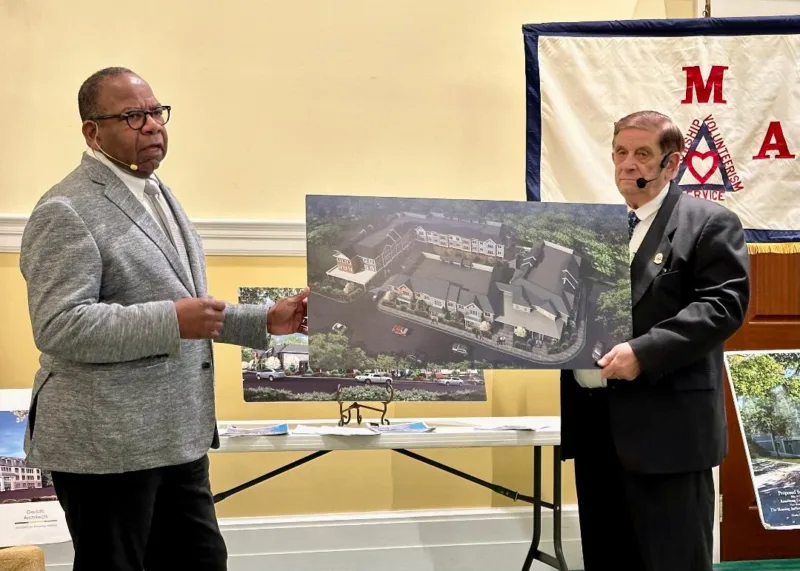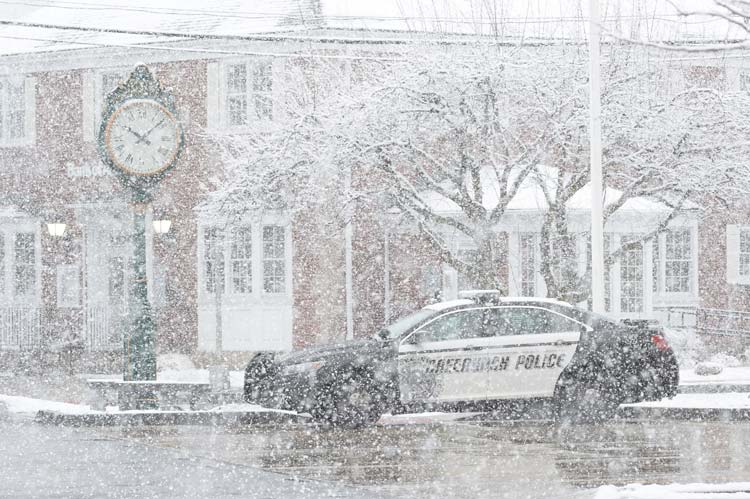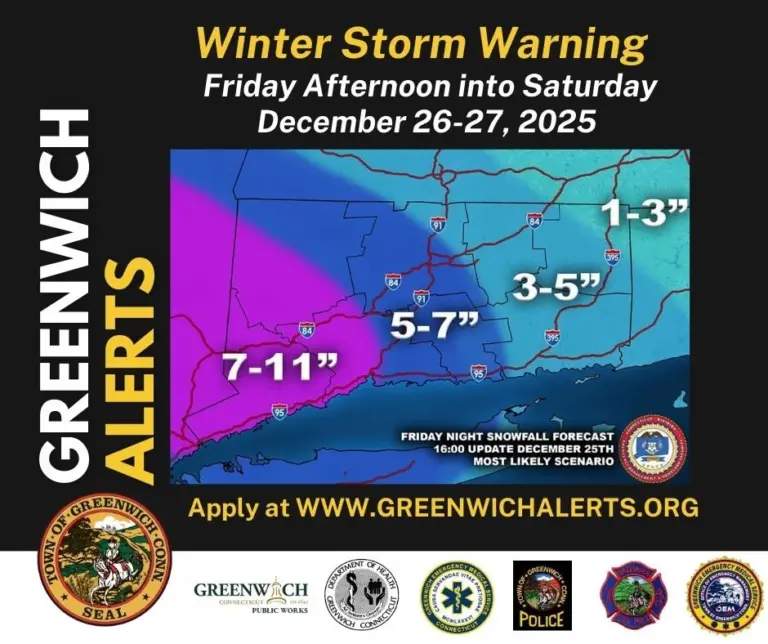
By Charles Shapiro
At the March 6 RMA meeting moderator Peter Berg introduced Sam Romeo and Tony Johnson of Greenwich Communities, formerly called The Greenwich Housing Authority. Sam Romeo is the chairman of Greenwich Communities. He has occupied leadership positions on the Greenwich RTM and RTC for over 20 years, served as ombudsman for the State of Connecticut Department of Social Services, and as a member of the board of directors for Greenwich Emergency Medical Services. He has owned and operated his own business—Command Packaging Supply Products—for the past 30 years. Mr. Romeo is a lifelong resident of Greenwich.
Tony Johnson, CEO of Greenwich Communities, is a real estate professional with experience in managing and developing public and affordable housing, and commercial and residential real estate. He is experienced in all aspects of real estate including HUD regulations, accounting/finance, feasibility studies, strategic planning, deal negotiation, construction, bond issuance/financing, tax credit financing, and mixed finance development and strategy implementation. He is a graduate of the Harvard University Graduate School of Design, Pace University, and Loyola University Chicago.
Affordable housing is one of the most controversial issues in Greenwich (and everywhere else!). NIMBY (Not in My Backyard) has become BANANA (Build Absolutely Nothing Anywhere Near Anybody). Residents are told to fear loss of “local control” due to 8-30g “mandates.” Sam and Tony are confronting many objections and obstacles.
Peter began the session by posing the following ten questions drawn from the RMA membership.
1. Why is more affordable housing in Greenwich good for employers (including the Town), good for property taxpayers, and good for all residents?
2. Will more affordable housing in Greenwich increase, or decrease, our worsening rush hour traffic congestion, frustrating downtown parking shortages, and unhealthy air pollution?
3. Greenwich has about 1,380 units of affordable housing, and it needs another 1,140 units to achieve the State’s 8-30g threshold of 10% of all housing units. How can Greenwich get to 10% in five years? Where ideally would it go? What is Ferris Landing all about?
4. Can Greenwich’s infrastructure handle more residents? Isn’t “density” a four-letter word in Greenwich?
5. Why does Greenwich need more affordable housing? Don’t Stamford and Port Chester have enough?
6. Why can’t poor people pull themselves up by their bootstraps, like we did? Why does the government need to subsidize them?
7. Many residents oppose affordable housing proposals. What are the real reasons? Are they prejudiced against poor people?
8. Is there an alternative to affordable housing?
9. In many towns throughout Connecticut a component of low income housing is to convert old homes, usually in the central part of town, into low income apartments; that is to completely gut these homes to accommodate two-to-three apartments, while refinishing the exterior of the homes including porches and landscaping. To what extent is this currently a part of Greenwich’s low-income housing program? What is the outlook for this type of program going forward?
10.There seems to be some confusion about whether the affordable units in an 8-30 development count toward the 10% threshold needed for Greenwich to regain local control over zoning in town. Do those 8-30 affordable units count when the developer has accepted financing from the Greenwich Affordable Housing Trust?
The answers to these questions were followed by a lively question & answer session.
The talk can be viewed by going to the RMA website at https://greenwichrma.org, and clicking on “Speakers.”
The RMA’s upcoming presentation, “Pioneers of Ragtime,” by Peter Muir, is scheduled for 11 AM on Wednesday, March 20, 2024. This presentation is a virtuoso exploration of the toe-tapping piano style that set America alight a hundred years ago and gave rise to styles such as blues and jazz. Peter Muir performs and explains the syncopated musings of Scott Joplin (“Maple Leaf Rag”), Fats Waller, W. C. Handy, Jelly Roll Morton and many others, providing a wide-ranging overview of the genre. He explains what ragtime is, how it arose, and why it is such an important link in the development of American music and culture.
Muir started his professional musical life age eight as a chorister in Westminster Abbey. He later studied at the Royal College of Music, London, then pursued a dual career as an educator and performer, becoming Director of Jazz and Head of Keyboards at Westminster School, and a jazz pianist performing in clubs and concert venues throughout the UK. He trained with Dr. John Diamond, the foremost authority in using music for health, applying the principles of his work to his performing and teaching.
In 1997 he relocated to the US, earning a PhD in musicology at City College of New York. He taught at City University, then became director of the Institute for Music Health, New York, and joined the guest faculty of the Graduate Institute in Bethany, CT. He continues to be active as a pianist and vocalist, performing a wide range of classical and vernacular styles, from Bach to Jelly Roll Morton to the Beatles, at festivals and concerts across the US, Britain, Europe, and Australasia.
Dr. Muir’s first book, Long Lost Blues: Popular Blues in America 1850-1920, was published in 2010. He is currently at work on a book summarizing his unique approach to the teaching and making of music, and another that is a groundbreaking anthology of early published blues and proto-blues.
To stream the presentation by Peter Muir at 11 AM on Wednesday, March 20, click on https://bit.ly/30IBj21. This presentation will also be available on local public access TV channels, Verizon FIOS channel 24 and Optimum (Cablevision) channel 79.
Note: The views expressed in these presentations are those of the speakers. They are not intended to represent the views of the RMA or its members.
RMA speaker presentations are presented as a community service at no cost to in-person or Zoom attendees, regardless of gender. Any member of the public who would like to receive a weekly email announcement of future speakers should send a request to members@greenwichrma.org. The RMA urges all eligible individuals to consider becoming a member of our great organization, and thereby enjoy all the available fellowship, volunteer, and community service opportunities which the RMA offers to its members. For further information, go to https://greenwichrma.org/, or contact members@greenwichrma.org.




